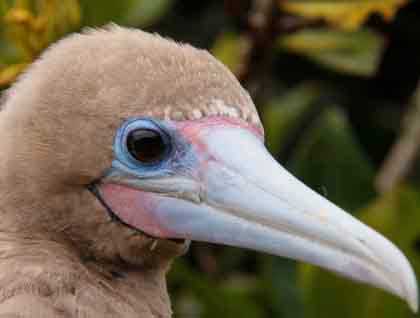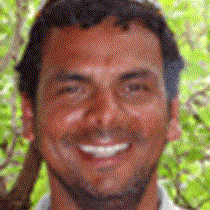Genovesa is a low, flat island, and the most isolated of the main islands in the archipelago. Genovesa Island is a sunken volcano located in the northern hemisphere, and it is home of the largest colony of red footed boobies, as well as many other species of sea birds. Due to its isolation, there are no reptiles on this island. Even the Galapagos hawks have not made it out here, and this lack of competition has resulted in the Galapagos short-eared owl becoming the top predator in this place. Its uniqueness is the reason why Genovesa is considered one of the most beautiful sites in the Galapagos.
Our day began early in the morning with kayaking along the sea shore. This vantage point allowed us to observe the interior of the caldera of a volcano which was once very active, emerging from the ocean and forming the island. Playful sea lions, noisy tropic birds and red footed boobies captivated the attention of our guests. After breakfast, we disembarked at Prince Philip’s Steps where we were surrounded by Nazca boobies, red-footed boobies and frigatebird chicks. The tameness and innocence of these birds was incredible to experience, especially in a place that is so wild and untouched. But our main mission was to find the elusive short-eared owl. Its perfect camouflage, blending with the brown rocks makes our search very difficult, but finally we found the first one, standing on a rock, observing us with its inquisitive yellow eyes, very quiet and concentrated on trying to catch a storm petrel, which is its main diet. We found three more owls along the rocky trail, and one of them disappeared inside a lava tube, which is where small petrels roost and live.
Back aboard, we prepared for our last snorkeling outing, to explore the undersea realm. We had close encounters with pacific green turtles, white-tipped reef sharks, white spotted eagle rays and many fish. Seeing them up close inspired excitement and admiration. After this great adventure, we came back to our ship to be briefed about our departure tomorrow, and afterward we enjoyed our last delicious lunch on board.
We were then ready to start off our next adventure, which was a visit to a stunning white coralline beach inside Darwin Bay. We walked along a narrow trail, with sea and land birds on both sides. We observed large ground finches, large cactus finches and sharp-billed ground finches, commonly known as the vampire finch, due to its peculiar habit of pecking and drinking the blood of boobies during very dry seasons, when it is almost impossible to obtain water or liquids from succulent plants. We were also happy to find a few marine iguanas, which are the smallest variety of iguanas in Galapagos, and perched on the bushes we also found red-footed boobies and frigatebirds protecting their chicks or incubating their eggs. As we returned to the ship after this fantastic day, we were conscious of our impending departure from this incredible place, but we are certain that our memories of these unique creatures will remain with us forever.







